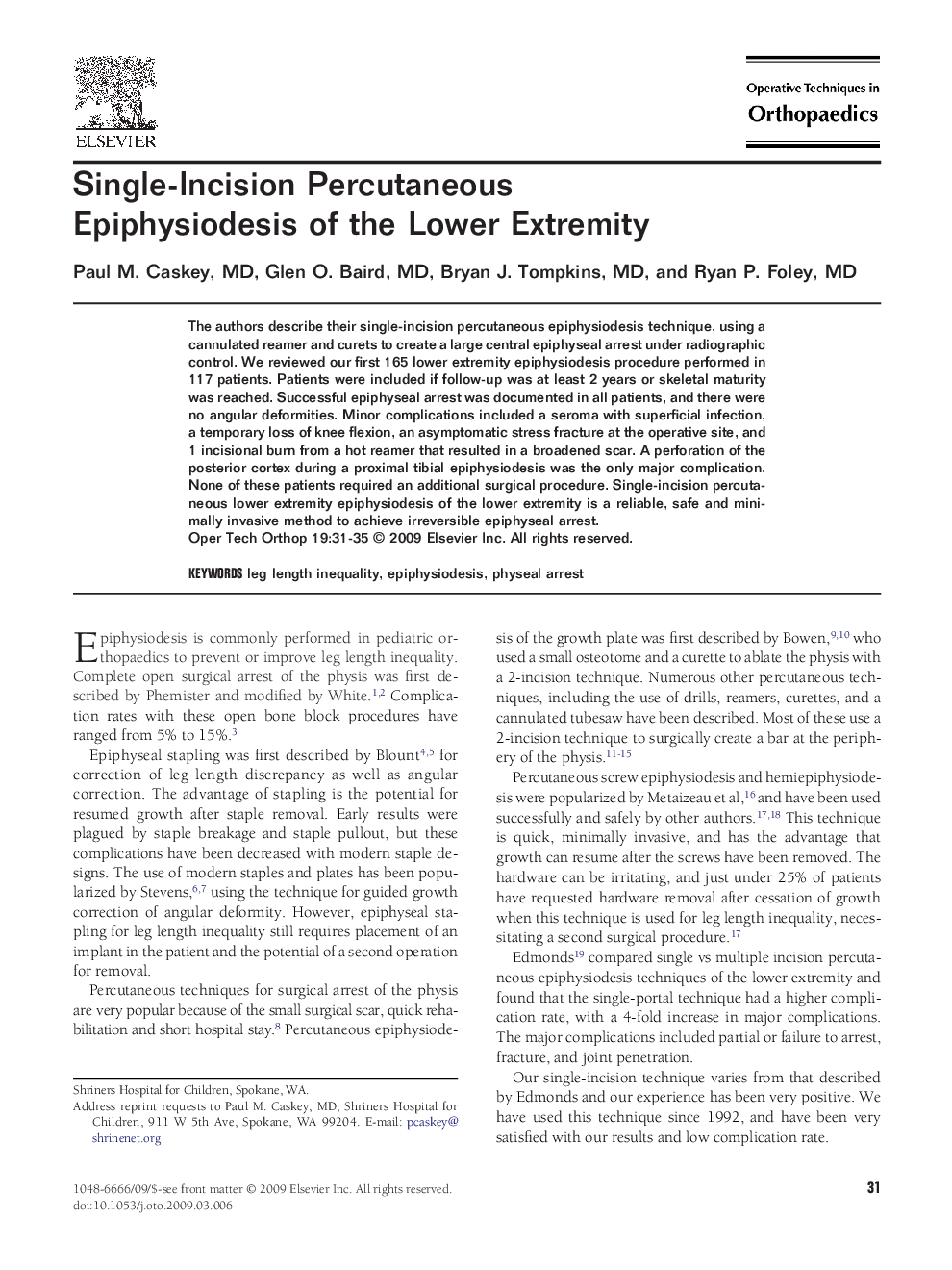| Article ID | Journal | Published Year | Pages | File Type |
|---|---|---|---|---|
| 4079229 | Operative Techniques in Orthopaedics | 2009 | 5 Pages |
The authors describe their single-incision percutaneous epiphysiodesis technique, using a cannulated reamer and curets to create a large central epiphyseal arrest under radiographic control. We reviewed our first 165 lower extremity epiphysiodesis procedure performed in 117 patients. Patients were included if follow-up was at least 2 years or skeletal maturity was reached. Successful epiphyseal arrest was documented in all patients, and there were no angular deformities. Minor complications included a seroma with superficial infection, a temporary loss of knee flexion, an asymptomatic stress fracture at the operative site, and 1 incisional burn from a hot reamer that resulted in a broadened scar. A perforation of the posterior cortex during a proximal tibial epiphysiodesis was the only major complication. None of these patients required an additional surgical procedure. Single-incision percutaneous lower extremity epiphysiodesis of the lower extremity is a reliable, safe and minimally invasive method to achieve irreversible epiphyseal arrest.
